Sparkling wine and amazing views
As soon as we arrived in Sonoma, we found our way to Korbel California Champagne in the Russian River Valley. Korbel is among only a few American winemakers that can legally use the name “champagne” for their product, instead of “sparkling wine.”
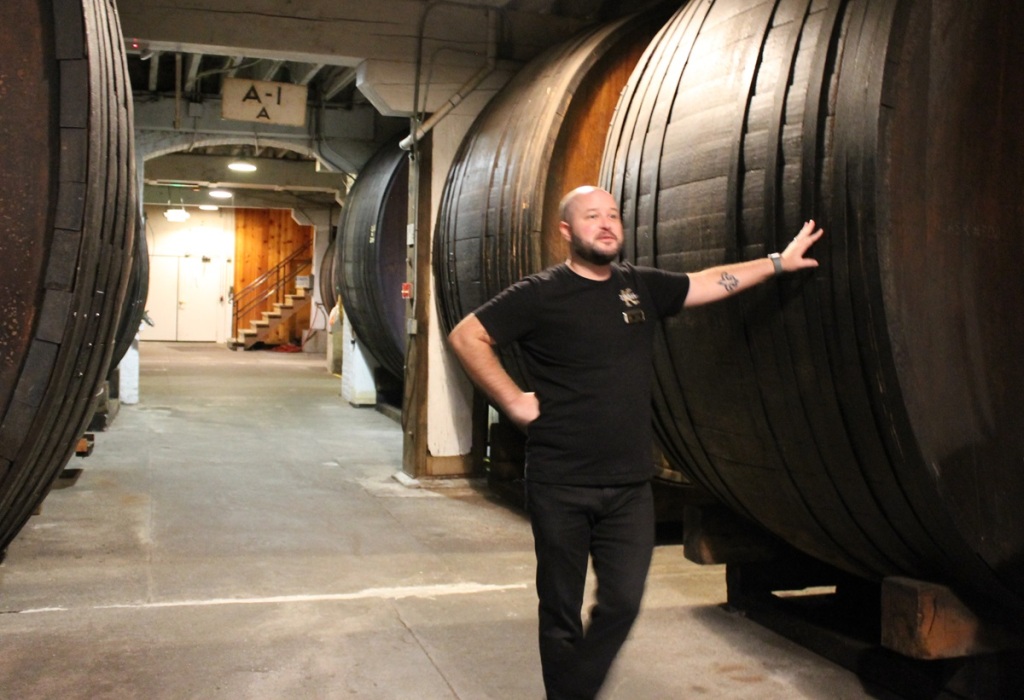
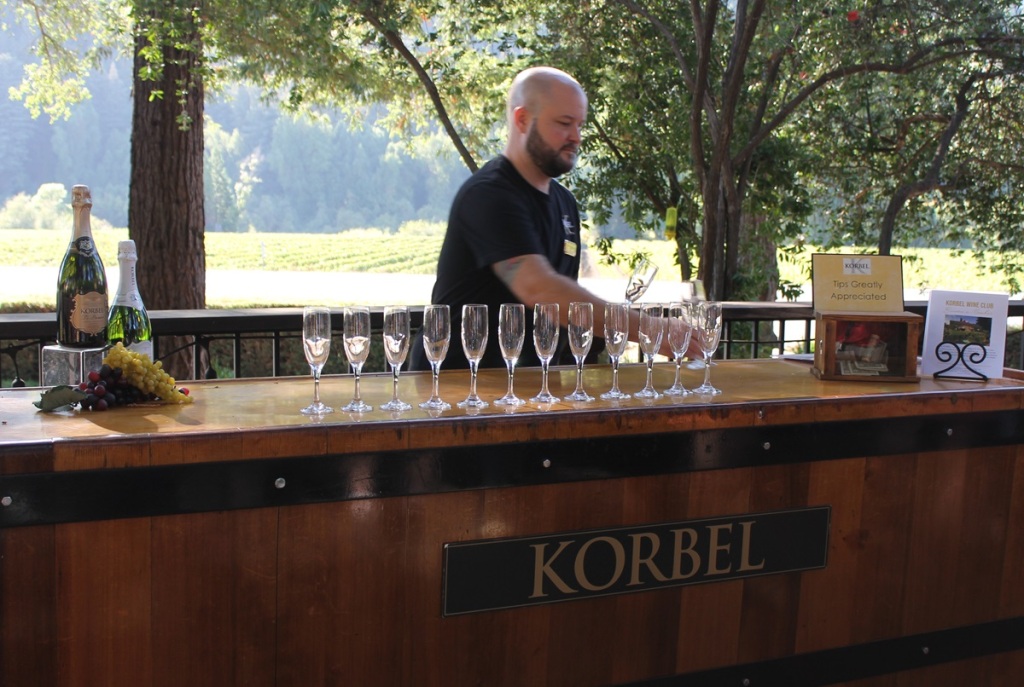
This winery is one of the very few operations in Sonoma or Napa that provides a complimentary experience for guests. Three times a day, the winery offers free tours of the historic facility, followed by a tasting of two to three champagnes.
Our guide Jack took us through the museum, the original winemaking operation, along with winery memorabilia. We saw wooden tanks once used for fermenting the grapes and an old wooden contraption for “racking” the champagne bottles, tilting them back and forth to accumulate the sediment in the neck of the bottle.
Korbel was started in the late 1800s by Francis Korbel, an enterprising immigrant from Prague, who made his way to California via New York. Francis and his brothers started a number of businesses – including cigar boxes and lumber — but the champagne by far was the most successful.
Francis Korbel was imprisoned in Bohemia before coming to America (he escaped with the help of his mother), but the experience made an impression on him. When he built the winery, he recreated a tower from the prison where he was held so he wouldn’t forget his imprisonment.
And why can they call it champagne instead of sparkling wine when France doesn’t allow that? When the company was founded in the 1800s, France wasn’t concerned about American champagne at all. After World War I, the French inserted language in the armistice treaty prohibiting American winemakers from using the name “champagne” for sparkling wine, but the treaty was never ratified by the U.S.
Finally, after several court battles, Korbel and other California sparkling winemakers reached an agreement with France in the 1990s saying the company could use the name “champagne” as long as it was qualified as “California Champagne” or “Russian River Champagne.”
At the newer end of the sparkling wine spectrum, we visited Domaine-Carneros Winery in Napa. This was probably the most crowded winery we visited, with a line of folks waiting to check in when we arrived for our reservation shortly after 10 am.
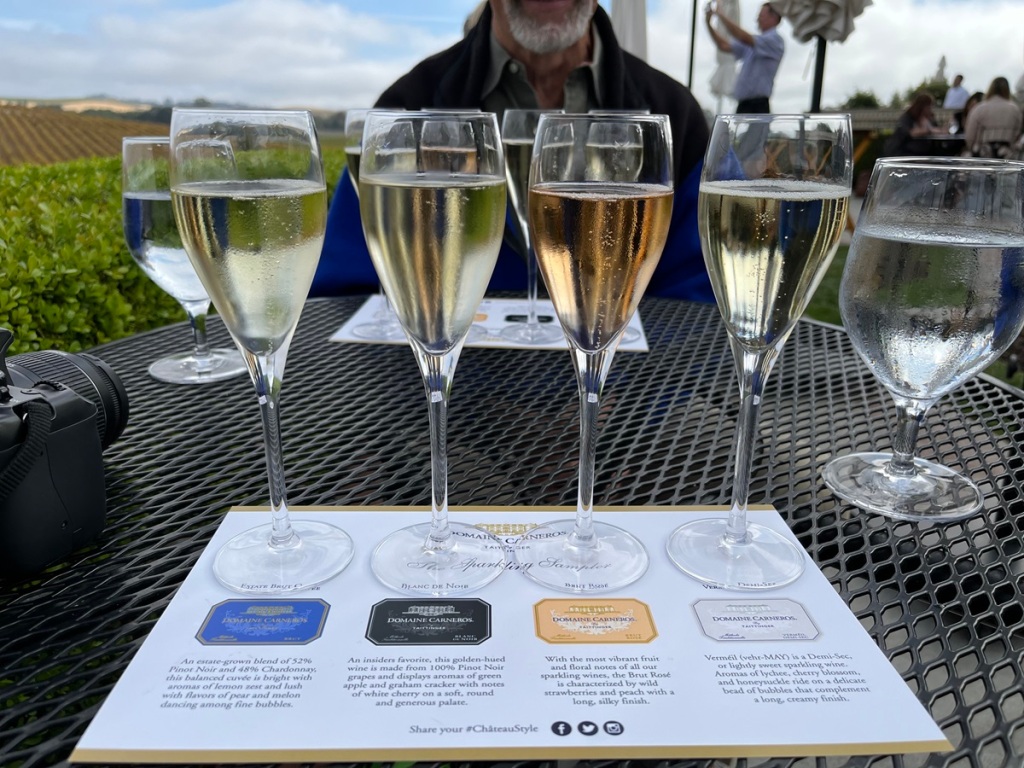
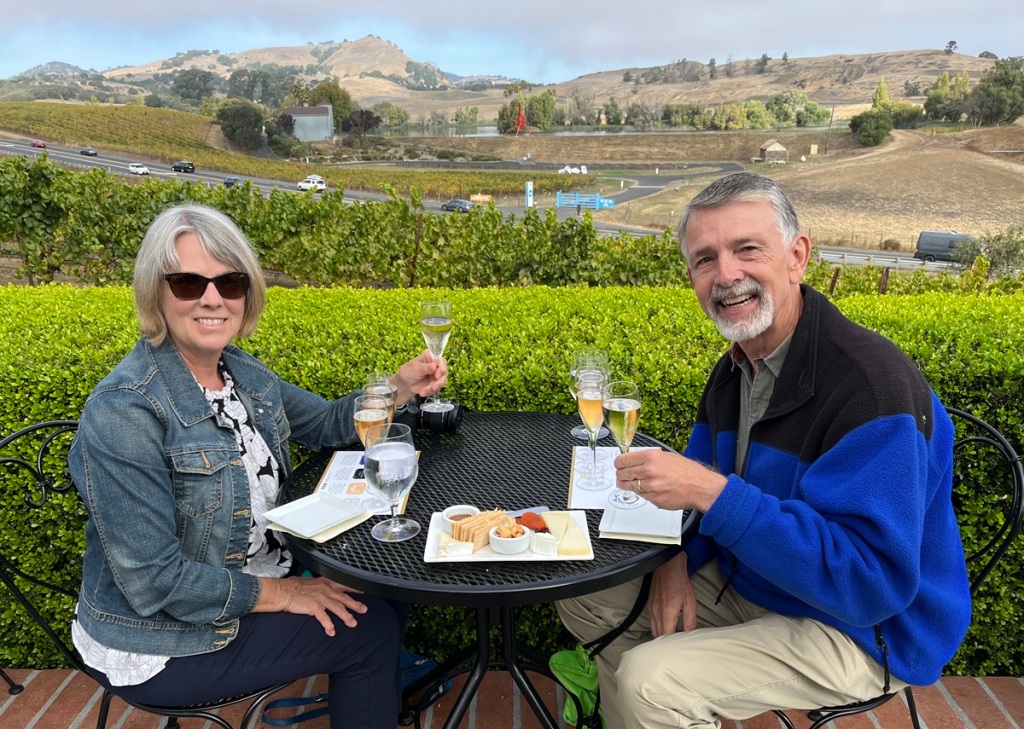
This winery was started in 1987 by French champagne businessman Claude Taittinger. The winery itself is designed after the Chateau de la Marquetterie, Taittinger’s French estate, and it is very upscale.
For our tasting, we were seated at a table on the veranda of the winery, overlooking the vineyards and nearby hills. We watched the morning fog slowly burn off, revealing the vineyards around us. We chose a cheese platter to eat with our four sparkling wine samples.
Our host was very attentive, and after the tasting, we walked around a little to get some photos. By that point, all the tasting tables were already full.
Taking in California
Believe it or not, there are other things to do in Napa and Sonoma than just wine! On our third day, we rented bikes and rode the Napa Valley Wine Trail from Yountville to Napa’s Oxbow Market.
This trail, mostly off-road, runs along Highway 29 between Yountville and Napa. It’s about a six-mile ride between the two towns, then we rode about several more miles into Napa to visit the Oxbow Market.
The trail also runs along the railroad tracks used by the Napa Valley Wine Train (which leaves from Oxbow Market). Along the way, you see vineyards and wineries. In fact, we rode right past Trefethen, a winery that we planned to visit the next day.
We reserved cruiser bikes from Napa Valley Bike Tours in Yountville. The tour company also has a shop in Napa, but it is a shorter ride to get to the trail from the Yountville shop than the Napa shop.
Once we reached Napa, we were a little confused about how far to ride to Oxbow, but we got directions from other cyclists. Oxbow Market is a mix of restaurants, shops, wine tasting rooms and at least one brewery, Fieldwork. We had eaten lunch before our ride, so having a beer at the end of the line for us really hit the spot.
On our fifth day, we drove to Bodega Bay on the coast, which is actually part of Sonoma County. We went to Bodega Head in the state park to hike on the peninsula that surrounds the northern section of the bay. The rocky California coast is so different from ours that we really wanted to visit.
As we walked along the cliffs overlooking the ocean, we saw waves crashing on the rocks below and heard the barking of sea lions sunning on a small island just offshore.
After our hike, we drove into town for New England clam chowder and a Dungeness crab sandwich at Spud Point Crab Company, a walk-up stand that is famous for these dishes. Though we had been warned that the coast was much colder than inland temperatures, we found that it wasn’t so cold that day.
Later we did a short hike through the Armstrong Redwoods State Natural Reserve in the Russian River Valley. The walk was short and flat, but gave us a worm’s eye view of these amazing trees. At least one we saw was said to be over 1,300 years old.
We visited the home of horticulturist Luther Burbank in Santa Rosa and an outdoor art installation outside Geyserville. On our way back to San Francisco, we stopped by The Barlow, a market in Sebastopol converted from a former apple cannery.
So there really is more to Napa and Sonoma than just wineries, although you’ll never forget where you are with vineyards everywhere you turn. It’s a great place to explore those other options.
Final post: Historic and boutique wineries, and tips on visiting CA wine country

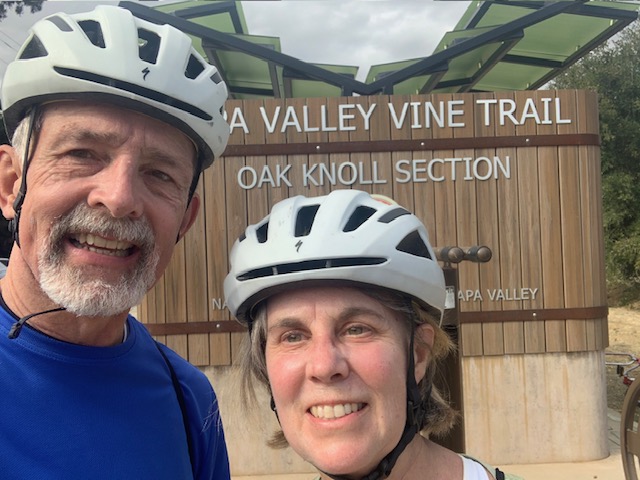
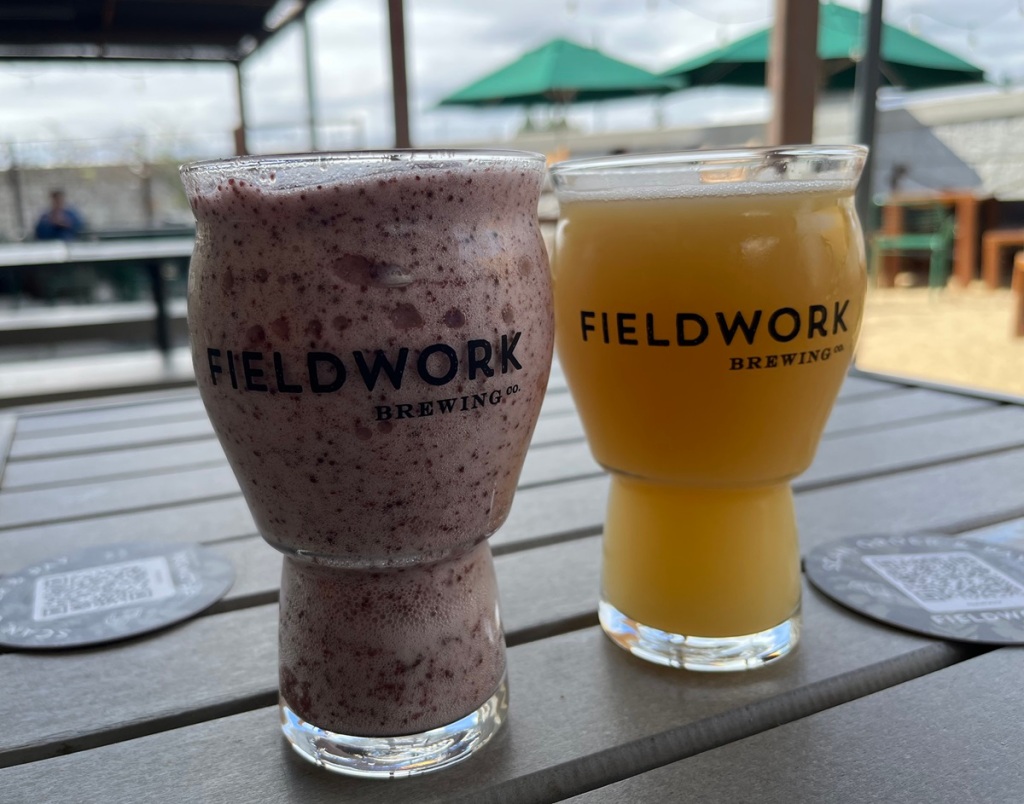
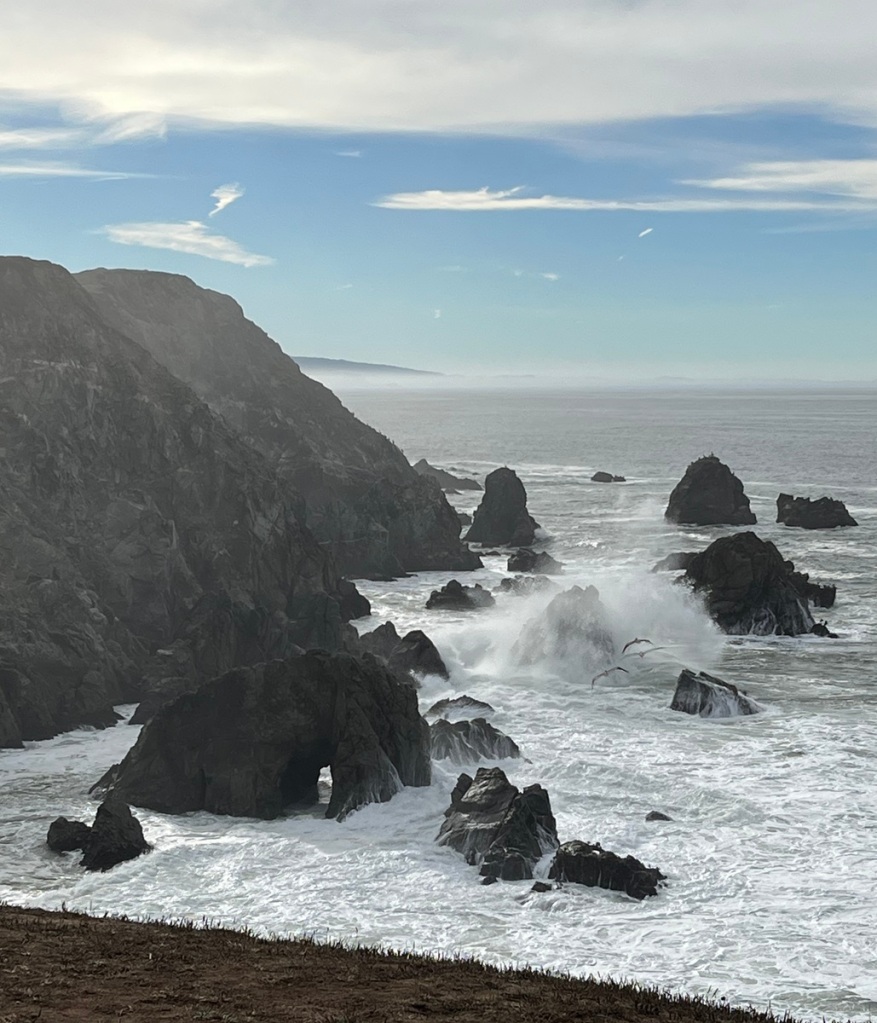
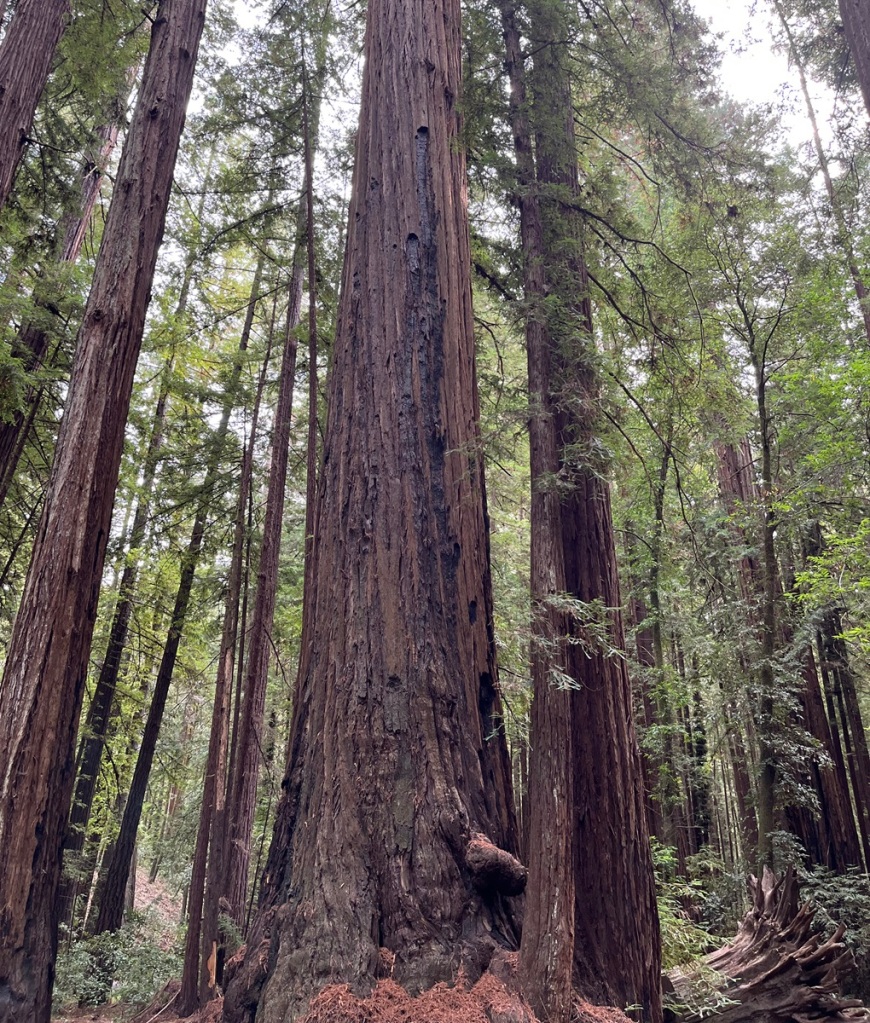
Pingback: Napa and Sonoma wrap up | Tarheel Taps & Corks